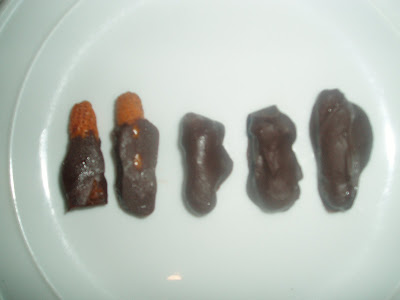As with the basic junket recipe below, you can of course use a different kind of rennet, and adapt the temperatures and quantities to that. You need
You needA small handful of fragrant rose petals (if in doubt, try less rather than more, to start with)
2 cups milk
Caster sugar
Mild-tasting honey (optional)
Vanilla to taste
Curds and Whey vege rennetA thermometer
To makeAdd the rose petals to the milk, and heat it gently in a pot to a scalding temperature. (Till little bubbles are just forming round the edges, but it's not simmering.)
Take it off the heat, cover it, and let it cool to 31 degrees.
By that stage the roses should have released a lot of colour and fragrance. (I love seeing how the petals fade.)
Strain the rose petals out.
Quickly mix in two BIG teaspoonfuls of either caster sugar or mild honey, till dissolved.
Add a drop (or 2 or 3) of vanilla and quickly stir.
Mix a couple of drops of rennet with a tsp of water.
Stir the rennet/water into the milk for 15 seconds or so.
This is your junket mix. Pour it into wide shallow bowls or glasses and leave to set.
Don't move the junket at all while it's setting. That can break the curd.
Once it's set you can refrigerate it. (Not before.)
Just before you serve, sprinkle a good coating of caster sugar over the surface. I don't know what it is, but this makes all the difference - the rose junket goes from being 'interesting' to 'completely delicious'.
(The sugar is the reason to make this junket in a wide shallow bowl - so that you have more surface area to sprinkle sugar over.)
Eat it straight away before all the sugar has become syrup. The crystally texture of the sugar is key!
 Extras
Extras* This rose junket is a great accompaniment to fruit salad. It's also nice served with a garnish of fruit and edible flowers such as borage or calendula petals. (I especially liked it with bananas and strawberries.)
* You can make moulded junket by lining your bowls with baking paper or waxed paper before pouring the junket in to set.
When it's set and refrigerated, put the plate flat over the top of the bowl and turn it very gently upside down. The junket will come out with the paper still on it. Then just gently peel the paper off.
Then you have EVEN MORE surface area for the sugar.
(And hopefully you can do a better job than me at getting the paper unwrinkly before pouring the junket in - see pic above!)








